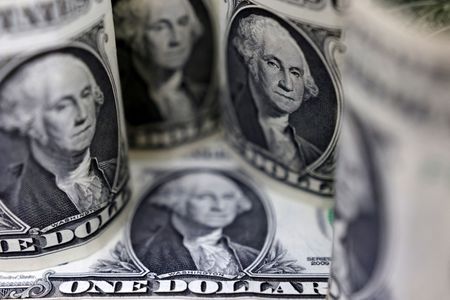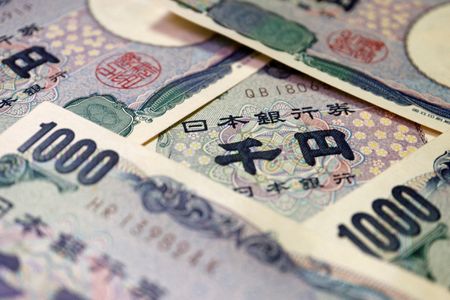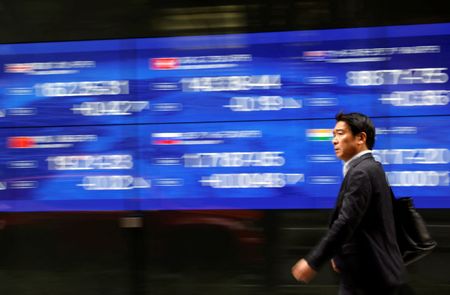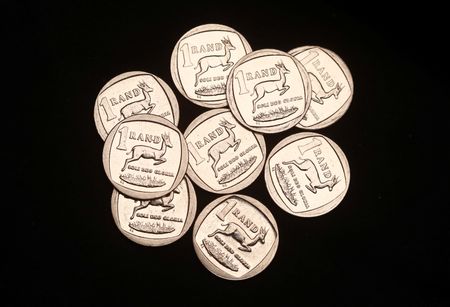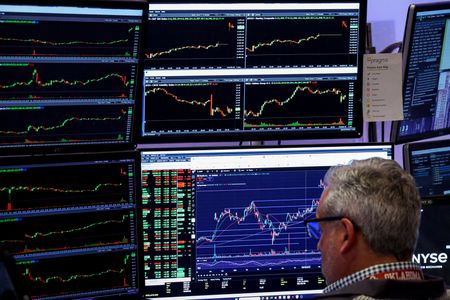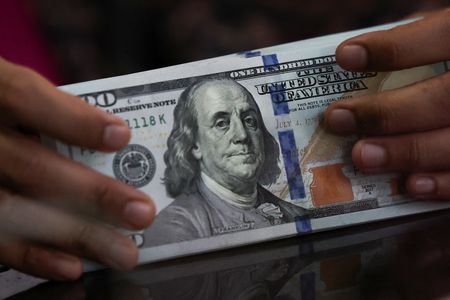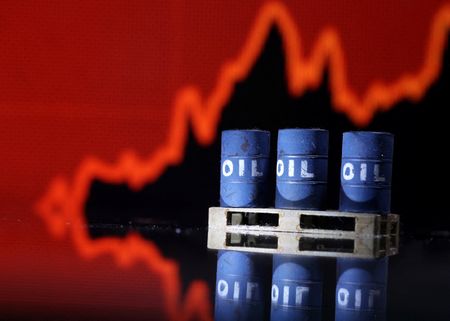By Hannah Lang
NEW YORK (Reuters) -The U.S. dollar fell to its lowest in more than a week on Wednesday as investor nerves about a global trade war abated, while the Japanese yen rallied on the back of strong wage data.
The dollar index, which tracks the currency against six peers, was last down 0.435% at 107.58, having earlier touched its lowest since January 27 at 107.29.
As U.S. President Donald Trump looked poised to impose 25% import tariffs on Mexico and Canada, the dollar on Monday jumped as much as 1.3% to 109.88. It has since fallen around 2% after both Mexico and Canada won a one-month reprieve by beefing up border security, although the United States did increase levies on China.
“In particular, the market was relieved that China didn’t hit back overly hard, and that shows that China is willing to tolerate high U.S. tariffs for the time being,” said Adam Button, chief currency analyst at ForexLive.
The euro rose 0.24% to $1.041 after dropping as much as 2.3% on Monday on fears about the global impact of tariffs and a possible extension of levies to the European Union.
The dollar fell most sharply on Wednesday against the yen, which was boosted by strong Japanese wage data and comments from a Bank of Japan official hinting at further rate hikes.
The U.S. currency was last 1.19% lower at 152.525, its lowest since December.
“This (Wednesday) morning’s dollar pullback looks like an extension of recent trends, with markets continuing to price out tariff risks from FX markets,” said Nick Rees, head of macro research at Monex Europe.
The dollar extended its losses against the yen after data showed that U.S. services sector activity unexpectedly slowed in January amid cooling demand.
The Institute for Supply Management (ISM) said on Wednesday its non-manufacturing purchasing managers index (PMI) slipped to 52.8 last month from 54.0 in December. Economists polled by Reuters had forecast the services PMI edging up to 54.3.
Data showed Japan’s December inflation-adjusted real wages rose 0.6% year-on-year thanks to a wintertime bonus bump.
That left traders increasing bets on more BOJ rate hikes this year, with just over 30 basis points priced in by the year-end.
Sterling was up 0.2% after hitting its highest in a month at $1.255.
YUAN DIPS ON CHINA TARIFFS
Trump’s imposition of new, 10% tariffs on China knocked the yuan slightly on Monday as markets returned from an extended Lunar New Year break.
The yuan fell 0.47% in onshore trading. Its gains were capped by the People’s Bank of China setting a stronger-than-expected midpoint rate, around which the currency is allowed to trade in a 2% band.
Investors had watched the fixing for clues on whether Beijing would allow the yuan to weaken to blunt the impact of the trade measures.
China on Tuesday imposed its own tariffs on imports from the United States in a swift response, and Trump said the same day he was in no hurry to speak to Chinese President Xi Jinping to try to defuse the situation.
(Reporting by Hannah Lang in New York; additional reporting by Harry Robertson in London and Rae Wee in Singapore; Editing by Kim Coghill, Angus MacSwan, Will Dunham and Kevin Liffey)

